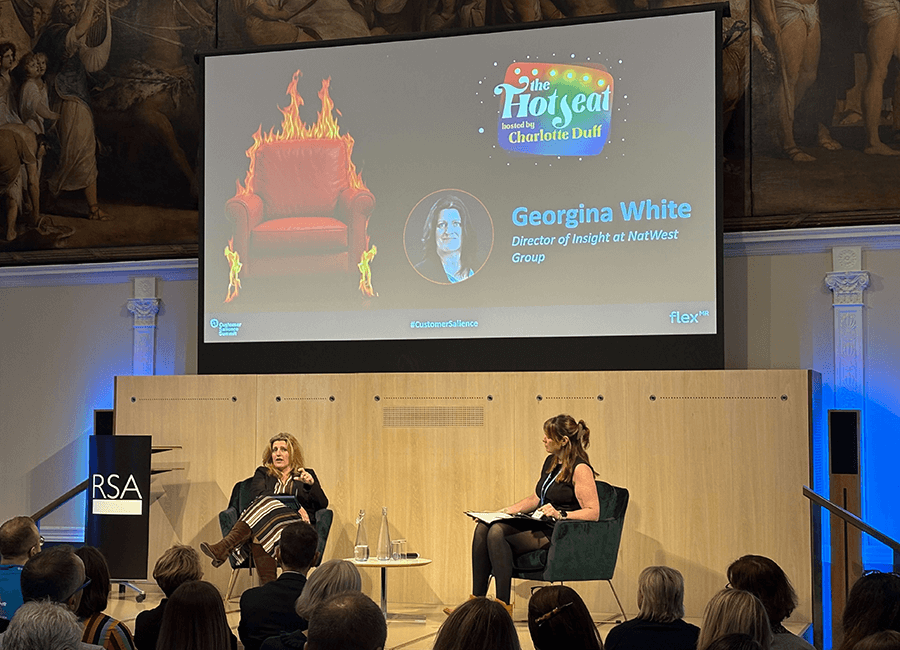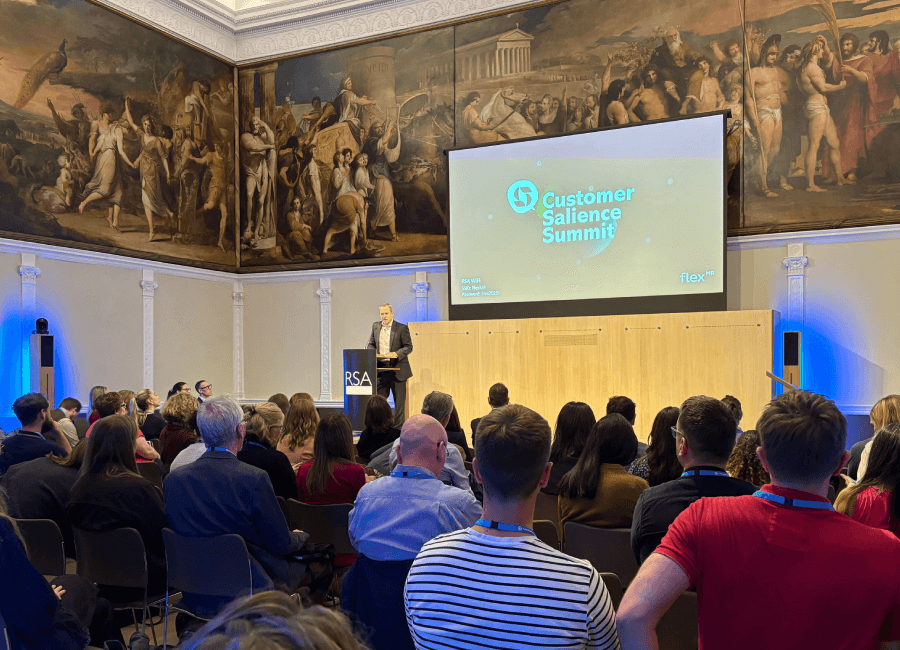We’ve all had stakeholders approach us with hypotheses that seem unbending and predictions that are set in stone. While surprises in research can be quite fun and engaging for researchers, this can often confuse a stakeholder who is hoping for a particular outcome. I find that the best way to mitigate surprise and potential upset is to make sure key stakeholders are involved and tuned in throughout the research lifecycle. This not only makes for a more effective relationship, but it leaves stakeholders feeling confident in your findings and recommendations.
I would define stakeholder engagement as the process of involving either an individual or a group in key stages of your research project. Depending on the project and interest from the client’s side, this could mean managing communication with a singular key stakeholder, such as a head of marketing, or with an entire team. Obviously, as the net gets wider and more stakeholders are involved, communication can become more difficult to manage. That also means it’s crucial to have a positive relationship with your client to act as a key in-between. Don’t underestimate the importance of navigating your stakeholder relationships through your client - this can colour the rest of the project.
I probably don’t need to convince you further, but the benefits of stakeholder engagement are endless, as they will strengthen your relationship with the client overall. Firstly, engaging stakeholders enhances the credibility and applicability of your research by allowing you to align your proposals, business objectives, designs, and outputs with the stakeholders’ needs. By doing so, you can bridge the gap between those firm hypotheses I mentioned earlier and practical implementation, making the research more relevant and actionable. Next, consider the fact that involving stakeholders fosters trust and a sense of ownership amongst all participants. This ensures that the findings will not only be accepted and less surprising but acted upon, increasing the overall value of your research.
| Tweet This | |
| The benefits of stakeholder engagement in market research are endless, but integrating stakeholder engagement into research processes can be tricky. |
How to Integrate Stakeholder Engagement into Your Approach
When you lean into collaborative aspects of the research lifecycle, engaging stakeholders can easily happen at all stages, from proposals to implementation, design, and analysis. This is achievable by setting aside time to speak to stakeholders directly and making your research check-ins a key part of their daily or weekly schedule. Below, I’ve provided examples of how stakeholders can be involved during different phases of research before delving into specific cases:
1. Preliminary stages
As stakeholders are involved early in brainstorming sessions to help identify critical research questions, this allows you to establish a relationship and communication standards. During early sessions, always ask for the overall business picture before delving into specifics, as this can unearth key themes, hypotheses and predictions that will help inform your research proposals. Consider asking what outcomes might surprise them, this gives you insight into how to frame your report, should data paint an unpredictable picture. The briefing and proposal stages also give you a chance to set expectations with the stakeholders and establish yourself as a key resource for them, ready to listen and dedicate time to the project.
2. Designing the research
During this stage, stakeholders often provide input on different designs, and this can come in many different forms, the most popular being comments on a document. I find that the most effective way to engage stakeholders at this point is to schedule a call to cover feedback and input in real-time. While making sure schedules align might be an initial obstacle, it can reduce design time overall, as feedback can be collated and collaborated on in the moment, rather than back and forth via emails.
3. Fieldwork and data collection
A key method of involving stakeholders in fieldwork is being as transparent as possible on fieldwork timings leading up to this stage. If you can share access to where the fieldwork is being run, this is even better. I always offer the opportunity to see the fieldwork as it comes in, whether that’s as an observer in a focus group or during a longer form qualitative study, such as our Question BoardMR tool. For quantitative work, NumbersMR makes it easy to share live survey or poll data with as many stakeholders as needed. Whilst you’ll encounter some stakeholders who don’t have the time to check in at this stage, offering site access and keeping them up-to-date with round-up emails - or even offering round-up calls - gives them a chance to engage as needed.
4. Analysis and interpretation
Involving stakeholders in the analysis stage provides context and insights that researchers often might overlook. While we would have gained plenty of background in the preliminary stages and heard hypotheses evolve and change during fieldwork, keeping them close to the research at interpretation means no stone goes unturned. It also lines you up to have a more relevant and effective report in the end. To do this, consider having a pre-analysis call to wrap up any last thoughts on the fieldwork. This would involve sharing your own takeaways as an unbiased researcher while learning from theirs. It’s key to have as many stakeholder voices as you can at this point so that their interpretations can help influence the focus of the report - making it the most meaningful and actionable for that team.
5. Reporting and debriefing
Never underestimate how you frame a debriefing session. My key advice is to treat it as a collaboration session, as you’ve done in each step above. Welcome feedback and discussion throughout the report, and encourage hearing from all voices. By opening the floor to collaboration efforts, you’ve already kickstarted any action they may take off the back of your research, making it worthwhile regardless of the final insights. It’s also key here, if you haven’t already, to reframe any surprising or negative insights so that stakeholders can feel confident with any potential changes they may need to action.
It’s key to consider how you manage time throughout all of these above steps. It’s easy to lose a stakeholder’s interest, especially if you don’t continue to offer collaboration opportunities, so reconsider how you approach engagement at each step, depending on a certain individual or team’s busyness.
| Tweet This | |
| Understand how to engage stakeholders throughout the research lifecycle with a how-to guide and a practical example from our in-house expert, Lily Nawara. |
An Example of Successful Stakeholder Engagement
It helps when you are working with a group of already eager stakeholders, who are interested in being close to the research. While that is not always the case, there are ways you can still implement some of the steps I mentioned above, rather than all of them, to successfully foster stakeholder engagement.
As an example, we’ll jump back in time a bit to when I was working on a consumer duty project for a client in the financial services industry. For the team of stakeholders, it made the most sense to involve them most at the fieldwork phase, which then eventually fed into my analysis and reporting, allowing me to deliver a report that left them with relevant, clear, and realistic goals.
To do this, I created accounts for each stakeholder, outlining how the asynchronous qualitative tool would work, and when they could expect the most engagement from participants. As the fieldwork was running for three days, we scheduled a check-in call at the end of each day, so we could cover initial reactions to responses and dig out any key topics for participant prompting.
By creating the accounts, stakeholders had the opportunity to engage as much as they could given their diaries for each day. By creating a consistent time to go over results, stakeholders could reliably express how they felt about responses. This also helped because even if just one of the stakeholders had time to dedicate to reading through responses that day, they could be guided in discussion as I covered key themes and topics. This meant that, regardless of how much time they had for the project, they could still benefit by joining the call and hearing about outcomes on that day. Thus, I could still benefit from hearing their hypotheses and predictions over the course of our fieldwork. This allowed me to turn around a clear and applicable report that responded to their needs and gave them actionable recommendations.
Prioritising Stakeholder Engagement
As you’ve now seen, engaging stakeholders throughout the research lifecycle provides multiple benefits, from increasing the relevance and actionability of the research to building trust in client relationships. I’ve given some examples of how involving stakeholders at the fieldwork stage and analysis allows for more successful debriefs and report receptions. Ultimately, by prioritizing stakeholder engagement, you can ensure that the research you run not only meets client standards and answers all relevant business questions but also delivers real-world impact for your clients.


















